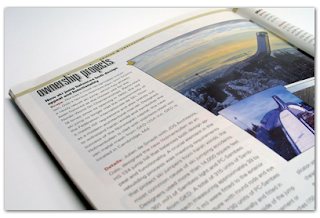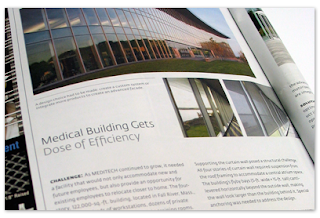Checking the list
For me time goes by quickly when I am busy, and this year has definitely kept me on my feet. Even with challenges in the market, we at Function: haven't just been sitting around playing solitaire. We have worked on getting new business, on bettering our own and of course, on making sure that our clients are achieving the best results possible. We've been exploring new tools and technologies, and how to use those to further our reach. I have to admit, much to my husband's chagrin, I have become quite proficient in Twitter. And after a day of work, I go home to chase a very active toddler around my house. It's exhausting I tell ya!
Now readers, I don't know about you, but I am not one for resolutions. Well, let me rephrase that - I make a list of both personal and professional objectives (in my sweet planner) for the coming year, which are more like action items than resolutions. It's like my own 2011 strategy. I figure I make 2011 plans for my clients, why not myself, right? I even draw little check boxes next to each item (this is my method for my daily to-do lists as well. Check boxes make my world go round). And, checking those boxes once a task is completed feels so good.
So, as we quickly head into a new decade (I am in shock that I have been around for so many decades at this point), think about what some of your 2011 objectives are. What's your personal and professional strategy? How will you best achieve your goals? What are the outcomes that you are hoping for?
I know that Function: (and my rapidly growing toddler) will continue to keep me moving in 2011. I can't make a check box to slow time down, but I can make the most of each moment.
Happy Holidays and Happy New Year! Catch you on the flip side.
Design, cocktails and X-ACTOs, oh my!
art directorFUNCTION:we’re into building things through marketing, design and public relations
Your Building Is Alive and Well
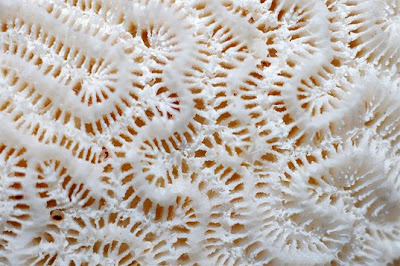
public relations specialist
FUNCTION:we’re into building things
GKD, Experts in Woven Metal Mesh and Daylighting, Received Byline in Environmental Design + Construction
It's That Time Again...
Once the panic subsided of all I had to do, I started to embrace it all and focus on being thankful. That IS the point of this time of year. It has been a hard year, in many ways, yet a really good one. The economy has really forced us all to look at ourselves and our businesses differently. Things that appeared as struggles also taught us to find new ways to do things. So I thought I'd reflect on what I was grateful to have learned or discovered during these more difficult times. It's always nice to look back so going forward will be so much better.
I am thankful.....
That we are still here and going strong. That says alot.
That the change in marketing budgets has created a change in how we communicate and encouraged us to work in new ways. We've done some really awesome things this year that went way past just sales brochures of years ago.
That I've discovered an incredible range of ways to use social media in conjunction with traditional marketing over the past years. It has been a powerful medium with vast reach.
To have realized that downtime isn't a bad thing. Rather, it is a time to learn new things, or test out those crazy ideas we've been thinking of.
For our ability as a team to change our actions, behaviors and habits to manuever through these times and make Function: a better place. We've all learned to be better more conscious, less wasteful and even more aware.
For Scoutmob. Really, for those of us that can't handle coupons and are looking for a deal, you can't beat this!
That our industry expertise has helped us gain new relationships with some really dynamic companies who are doing some incredible things.
To have been forced to streamline excess spending and waste.
That this time of year gives us a reason to do something creative, unusual, fun. Design a cool card, give back to an organization we love.
That i can really see the efforts of architecture and building products to make better schools and institutions. Being a part of the elementary and 4/5 academy, this really is exciting. I spent alot of time in the cafeterias for Thanksgiving lunches last week looking around - trying not to look at the holiday lunch....
That Thanksgiving is over and there are no more left overs.
That I truly believe 2011 is going to be a great year.
Iconic Ski Jump in Norway, Outfitted with GKD's Woven Metal Mesh, highlighted in Metal Building
MEDITECH, Constructed with Kawneer Products, Highlighted in Architectural Products
Planning For 2011
Here at Function: over the last several weeks we have worked in conjunction with IsqFt, the nation’s largest internet plan room, reaching out to the builder/contractor market and asking important questions relative to product selection and purchase habits. Due to the constant changes with this audience these habits and thought processes have evolved over the past few years. After receiving direct feedback from this audience segment, we then have the facts do better planning for our clients. To see the results of this research, please contact [email protected].
We constantly get asked by building product manufacturers "what are other companies in the industry doing with their budgets or their staffing issues, etc." So we are currently in the middle of a study with the BPM’s to take a top level look at the industry as a whole to determine best marketing practices. These results will be shared back to the industry and will be valuable information in future planning.
These are just a few ways that Function: does its homework before crunching the budget numbers.
dana castle
principal + director of strategy
404 524 3075 x12
functionatl.com
FUNCTION: we’re into building things through marketing, and public relations
check us out online:
blog: http://blog.functionatl.com/
twitter: @FunctionAtlanta
facebook: http://www.facebook.com/pages/Atlanta-GA/FUNCTION/59353898297
linkedin: http://www.linkedin.com/groups?gid=1842463&trk=myg_ugrp_ovr
IFMA World Workplace 2010 Conference & Expo
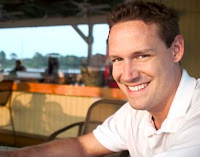 IFMA's annual tradeshow, the World Workplace Conference & Expo, celebrated it's 30 year anniversary this year. Held at the Georgia World Congress Center in downtown Atlanta from October 27-29, this is the IFMA's flagship event and one of the biggest conferences around focusing on workplace programs.
IFMA's annual tradeshow, the World Workplace Conference & Expo, celebrated it's 30 year anniversary this year. Held at the Georgia World Congress Center in downtown Atlanta from October 27-29, this is the IFMA's flagship event and one of the biggest conferences around focusing on workplace programs. The facility manager audience is an increasingly important decision maker/influencer for our clients and and the last time World Workplace was held in Atlanta was 1988, so it was an easy decision to check out IFMA's trade show to see what it was all about. Not to mention, one of our clients, Johnsonite, needed some press kits delivered to the media room.
Because work environments and workplace programs touch so many different fields, IFMA's World Workplace attracts professionals from not only facility management but also other key segments to the building products industry: architecture, design, engineering and more. As a seasoned veteran to trade shows in the building and construction industry, yet a first timer to this show, I was impressed by the exhibitors and how well it was attended.
The opening of the expo was kicked off in grand fashion with a drum line that marched through the Georgia World Congress Center, down the escalators outside the exhibit hall and eventually marching onto the trade show floor. I captured a brief video of the drum line you can watch on Function:'s YouTube Channel here: http://www.youtube.com/watch?v=Q_X5Eq0ItNU.
I also took a few images from inside the expo you can see on our Flickr page here: http://www.flickr.com/photos/functionatl/sets/72157625290967410/
For me, one of the most impressive parts of World Workplace was the use of social media to take the show viral and reach a wider audience than just those who attended the show. The IFMA World Workplace website featured a social media section called NETworkplace which embedded feeds from their twitter, youtube and flickr accounts to share real time news, stories, images and video from the trade show: http://www.worldworkplace.org/networkplace/
Those who were not able to attend could keep up with the happenings at World Worksplace as twitter users easily contributed to the show's live twitter feed using the hashtag #ww2010. Video footage from the opening keynote and welcome reception was quickly posted online and IFMA also shared images from the conference sessions and exhibition through Flickr.
I've seen other industry associations attempt to incorporate social media into their trade shows but I haven't seen anybody else pull it off as well as IFMA did. Greenbuild: you're up next. I'm interested to see how the USGBC uses social media to help promote their annual conference and expo.
ted hettick
director of client development
business analyst
FUNCTION: we’re into building things through marketing, design and public relations
Waste not
On a personal level I like to think that I can be ("can" being the operative word here) creative when it comes to home decor. In my mind I have aspirations of generating fantastic pieces of art to decorate the walls of my home. I see an old window frame and think, "how great would that be on the wall with a big, blown up picture behind it". Or look at my kid's empty formula containers and thought they would be really useful as planters. And maybe, just maybe, I could do it. Maybe I could create something useful and artistic, and even, dare I say, good, from items I have or have seen around. (Art is subjective, right?) My problem with my personal artistic ambitions is that I never get around to executing them. So the formula container planters end up going out with the recycling and the old window frame gets tossed. It's a waste.
Not to get all environmental huggy-huggy on you, but we, the people, really do waste a lot. From not turning off water when we brush our teeth, to letting things go to landfills because we are tired of them or they have served their purpose. This is a problem in the architecture and design community, as manufacturers send product samples and once those samples have served their purpose or become outdated the question of what to do with them arises. Very often materials get wasted and sent to landfill.
Today I had a really interesting call with Mike Dungan, cofounder of ZeroLandfill(TM) and President and CEO of BeeDance . For those of you who aren't familiar, ZeroLandfill is a wonderful project that began in Cleveland, Ohio. In 2006, ZeroLandfill™ began in 2006 as a recycling effort. Rather than throw expired specification samples into the trash, Mike and a few others organized a one-day "event" where architects and designers could drop off their old samples to be recycled. However, the program expanded when one of the team noted that that artists and educators would love the materials. These artists and educators where then invited to harvest the materials for their own projects.
Since inception, ZeroLandfill has collected materials in over 10 markets and is planning a great deal of expansion in 2011. I learned about ZeroLandfill through a client of ours who works with them to ensure that their product samples don't go to landfill. I also spoke with a talented artist, Nicole McGee who creates beautiful art using many items she has upcycled with ZeroLandfill.
These conversations have gotten me to rethink how I use the items around me. During our conversation Mike said, "In nature there's a lot of waste, but nothing's wasted. Humankind could achieve the same results."
So my readers, as manufacturers, designers, architects, think about how you are using what you have and what you are doing with it when you're done. Get creative and if you are like me, great ideas but not sure about the execution, look for programs like ZeroLandfill and see if you can give those old samples a good home.
The Future is....now?
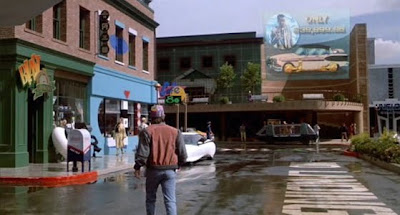
public relations specialistFUNCTION:we’re into building things through marketing, design and public relations
Extending Reach
I can’t count the amount of times a client has said that they struggle with the sales force. Are they communicating correctly to the audience, do they know the products, are they using the tools, how do we track results? As much as those brochures or kits had all the bells and whistles to speak for themselves, often they remained in trunks or briefcases. At the same time, many of them made them into the right hands and did their job wonderfully. But that percentage that didn’t….how could we close that? How could we reach more of our audience effectively? Previously, that was a tough one.
Today, we have the opportunity to really extend the reach of our messaging and campaigns through integrated marketing and PR. To really create an impact. One that we can control. We can take that campaign, and broaden it by PR initiatives, as well as social PR. I never thought I’d get used to the idea of social PR - previously so different from the idea of design - but it has the ability to take all that we’ve created, and blast it into different mediums (we designers love recognition anywhere we can get it). Talk about reach. And, we can track it (because we all need validation that it’s a brilliant campaign).
We used to launch a product with a brochure and ad. Again, very reliant on the sales force, and in regards to the ad, where did it lead them? Now, we create an ad, that drives the audience to a microsite, which in turn provides a platform for an incredible amount of information. At the same time, increases database information. If the ad didn’t get them there, how about tweeting about the campaign? Or maybe speaking up on LinkedIn? Or a bylined article? So if the brochure is in the trunk….so be it. We’ll find another way. This is the advantage of integrated marketing and PR….where the sales force falls short of reach, PR and social PR can pick up the slack and carry the message. The more integrated, the more angles of attack.
Create impact through design. Design is an incredible tool, but even better when it generates a lot of impact.
michele emmons dehaven
principal + creative director
FUNCTION:we’re into building things through marketing, design and public relations
a+d trend watch: a conversation with susie spivey-tilson of tvs design
The A+D Community is focusing on building performance, especially measuring actual efficiency and tracking progress toward the Architecture 2030 Challenge.
One of the biggest struggles architects and designers have with manufacturers is the disconnect between BPMs staff who are knowledgeable about LEED - and the BPMs field staff/sales reps who she is in touch with directly who struggle to answer questions about LEED credits and how their company's products contribute to credits in the various LEED categories. Not surprisingly, she said she loses faith in a BPM if she has to make 5 calls to get an answer about a LEED question she may have. As short staffed as many of us are in this industry, nobody has time to chase down an answer that may be easier to get from a competitor, so it's critical that reps are able to speak intelligently on LEED.
The prevalence of architecture firms using modeling software is increasing dramatically. Not just BIM but energy modeling as well is becoming the norm. There is also a movement toward "getting back to the basics" - fundamental design aspects such as building orientation.
WATERGY: Susie said “Green is the new black and water is the next energy”. Design teams are paying more attention to the energy consumption associated with transferring water from the source into the building to the end user. The term Watergy™ was coined by the Alliance to Save Energy to describe the strong link between water and energy in municipal water systems.
ted hettick
director of client development
business analyst
FUNCTION: we’re into building things through marketing, design and public relations
Inspiration
Think about it.
I find inspiration in many places; in every move my son makes as he takes on new challenges and (literally) dives headfirst into learning new things. I find inspiration in my family for the lives that they have chosen to lead and their many accomplishments. I find inspiration in art, music, literature, movies and architecture.
I try and look at things with open, accepting eyes so that I can be inspired by everything I see. Sometimes that's hard. There are days where we all feel a little less than inspired or enthusiastic. There are days where you look at your work and think, "how can I make this different? Or better?"
I have these days. You know you have had them too...
But that's one thing that I love about Function:. Inspiration is everywhere. Each person at Function: is an individual. They each have their own knowledge and expertise. Every person here is unique and creative and watching them as they develop an ad for a client, identify unique, new business opportunities, create a blog about their upcoming wedding or design their child's birthday invitations, inspires me to look at what I do (personally and professionally) and ask myself if there is a new way I can do something - a different direction I can take or something that will make what I am working on different and better.
As marketers our job is to motivate audiences and instigate new ways of thinking. The manufacturers we work with work to encourage new design through their products. The architects they target work to stir emotion and arouse interest through the buildings they create.
We all want to inspire and we all need to be inspired. So, I ask again, what is it that inspires you?
Launching a Product in the Building and Construction Industry
1. Look at all your audiences. Each one (including media) requires a different and relevant message. An architect’s thought process is different from a contractor’s, which is different from a trade publication editor, etc.
2. Rank your target audiences. Categories will depend on your need, whether you rank them by power to specify or influence or size. If you have a limited budget, for instance, and your product category lends itself to being specified- the message should be focused on the specifier or architect.
3. Chart out your message channels. From PR to advertising to social media, keep messages consistent in all channels—say it once, say it twice, say it again!
4. Create conversations around your new product. Go to your sales channel, go to your specifiers and your installers and collect relevant information about product usage. Then you can encourage viral conversations about it. Remember that conversations are always two-way—create the community and contribute effectively.
5. Know how your product is positioned in the market place. When you are familiar with your product’s place and reputation you can find the opportunities to create buzz where you can build awareness the quickest. Meet the market at the need.
dana castle
principal + director of strategy
FUNCTION:we’re into building things through marketing, design and public relations
Releasing fear, embracing creativity.
Several months ago, I was struck by his post on the lizard brain. This is an actual part of the brain, and has been with humankind for millennia. It's the amygdala, near the brain stem, and is responsible for the formation and storage of memories associated with emotional events. If you've experienced an event that left you afraid of heights, for example, your lizard brain tells you to slowly back away from the ledge, to be careful.
Unfortunately, it also tells you to play it safe, to stay within that comfortable bubble you've built for yourself. This is particularly bad in business.
Every designer has had those clients who are terrified of breaking out of that bubble. You start off with a presentation of inspired, thought-provoking design work, but are forced to go through round after round of dilution only to end up with the same old tired line.
Pushing past that pattern is difficult. We at Function: are lucky to have trusting and truly brave clients. And while we worked for years to get here, we're constantly working to make our expertise ever more solid. We push ourselves every day to find innovative and exciting methods of promoting our clients and their initiatives. We do this through super smart strategy and, of course, slammin' design.
Case in point, the recently-launched integrated campaign announcing Kawneer's partnership with Forster. It's a spectacular leap forward for Kawneer, adding steel to their already all-encompassing array of aluminum products. Thanks to this partnership, Kawneer leverages themselves as the only supplier in North America to offer a complete range of aluminum and steel glazing solutions.
To fully express the bigness of the partnership, we went big with the design.. and the message. And Kawneer fell hard for the concept. We can't say we blame them.
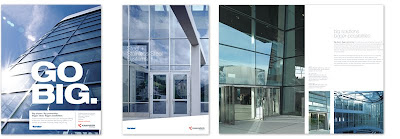
angela k mitchell
art director
FUNCTION:
we’re into building things through marketing, design and public relations
Excellence has its rewards!
 Below is a video clip from Architectural Record's AIA Excellence in Advertising Awards Ceremony featuring commentary from the jury on our print ad that won Best in Class: Single Page.
Below is a video clip from Architectural Record's AIA Excellence in Advertising Awards Ceremony featuring commentary from the jury on our print ad that won Best in Class: Single Page.From one of the judges:
"I gave it high marks for aesthetics; it stopped me in my tracks and compelled me to read more. I read every word of it, yet it never even showed the product."
Video courtesy McGraw-Hill Construction.
ted hettick
FUNCTION: we’re into building things through marketing, design and public relations
lighting up the market [ GKD Webinar ]

See and Be Seen: Designing a Transparent Media Facade
Situation: One of GKD’s 2010 objectives was to increase awareness of its transparent media facade products, Mediamesh® and Illumesh®. Because the products had been on the market for a while, Function: suggested GKD re-introduce them to its audience of architects and contractors by focusing on product capabilities. Function: also recommended educating GKD’s audience through a new approach rather than the traditional product press release.
To educate the market, Function: worked with GKD to develop messages and content that emphasized the unique features, as well as the aesthetic, environmental and financial benefits of transparent media facades. Function: developed an internal calendar of bylined articles the company could develop and pitch, as well as various case studies, a comprehensive webinar and more. The key was promoting an integrated message that consistently educated architects on the benefits of transparent media facades. Consideration of the vertical markets played a large part in message and byline development. Because education was a critical factor throughout the re-introduction campaign, segmenting the audience into vertical markets was essential.
To reach the audience, Function: targeted specific industry publications across the vertical segments, as well as architectural and environmental building and design magazines. All case studies and webinar information was distributed to the targeted media list. In addition, bylined articles have been developed and tweaked with the specific publication’s audience in mind.
Results: The re-introduction of GKD’s transparent media façades is an ongoing campaign and has been very successful thus far. GKD hosted its webinar, “See and Be Seen: Understanding Transparent Media Facades” and drew more than 125 registered attendees, which included architects and media. Function: produced this webinar and developed all promotional content including press announcements and eblasts. Function: and GKD continue to find that emphasizing the specific benefits of the products has not only made the products more memorable, but also has been an effective way to educate GKD’s audience.
things are looking up [ Ceiling Tile Focus Group ]
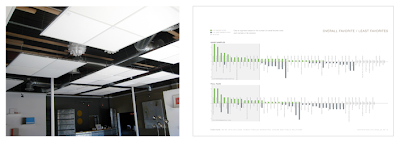
A+D Ceiling Tile Qualitative Research
Situation: Despite a superior product offering, a ceiling tile manufacturer was struggling to compete for market share against established competitors with larger marketing budgets. The client needed to adjust their message and positioning for better alignment against the competitive landscape and turned to Function: for an insightful, customer focused marketing strategy.
Qualitative research was conducted to gain favor with new and existing ceiling tile specifiers by aligning the client with current industry style trends, creating new sales and marketing opportunities, and generating R+D initiatives. The study focused on revealing trends such as aesthetic preferences and nomenclature within the architect and designer audience segments. To uncover these findings, interviews were conducted with 22 ceiling tile specifiers from the A+D community.
Results: The results provided an overall look at the competitive landscape and how other manufacturers are describing their products. A competitive analysis was created from the findings and recommendations were made for strategic positioning and branding. A simple approach to A+D customers was uncovered, resulting in an opportunity to increase sales by saving specifiers a step in the product selection process. The study was designed to maximize reception of market insights and the findings ultimately helped the client to:
- Better understand the needs and preferences of target audience
- Deliver a system/solution comparable to the competition
- Establish a tighter spec
- Increase awareness
- Develop brand loyalty
- Increase sales and capture market share
Other recommendations helped the client:
- Understand the thought process of the architect or designer at the time of product specification
- Differentiate their products amongst the competition
- Achieve deeper vertical segment marketing
laying ground for haiti [ Johnsonite NeoCon Event ]

Situation: With a history of strong sustainable product development and practices, Johnsonite sought to increase awareness around its ongoing sustainable programs and efforts during the NeoCon® World’s Trade Fair 2010. However, gathering an audience through a static event at tradeshows can be difficult and costly. The company wanted to develop an event that created an ongoing buzz at show, gaining them recognition amongst designers, architects and media.
To help develop a campaign, Johnsonite enlisted Function:. Taking the audience and messages into consideration, Function: worked with Johnsonite to create an interactive event that would unite architects and designers to create a larger picture of sustainability, generate awareness of the platform, showcase products and provide ongoing education to these audiences. To do so, NeoCon attendees were invited to come by the Johnsonite booth to pick up a piece of the company’s floor tile (getting specific product samples into the hands of the audience). The attendees were then asked to place their piece on a larger canvas, working with their peers to create a collage. For every tile placed, Johnsonite pledged to donate five-square-feet of flooring product to Architecture for Humanity for its efforts to rebuild in Haiti.
Promotion of the event was critical. In addition to working with Johnsonite to create and execute the event, Function: also worked on developing several promotional items, including a microsite, Tweet cards and Collage stickers. The microsite was designed to replicate the visual of the collage, with links to Tarkett, Johnsonite and Azrock sites, key product information, sustainable messages, event information and a downloadable press kit. In addition, Function: created an online Twitter campaign for Johnsonite to share sustainable messaging and show information. The event was also promoted prior to the show via press release and with media during scheduled interviews throughout NeoCon.
Results: Due to excellent event attendance, Johnsonite will donate 3,000-square-feet of its Harmonium xf Linoleum Flooring to Architecture for Humanity. In addition, several industry publications featured the story online and blogged about the event. These included Interior Design, Interiors & Sources, Environmental Design & Construction, FloorBiz.com and PME, amongst others. Johnsonite also gained followers and recognition on Twitter and continues to grow its group of online followers.
getting social with the industry [ Function: Social Media Campaign ]

Situation: Successful public relations and communications are dependent upon a company’s ability to reach its target audience. As an agency that specializes in connecting building product manufacturers with the architecture, engineering and construction (AEC) industry, Function: sees connecting clients with their target audience as our most important task. Recently, we launched our “Socialize” campaign. “Socialize” allows us to use new and rapidly growing forms of technology to engage and connect with architects, manufacturers, contractors, engineers and more. The ultimate goal of these efforts was to fulfill their promise to clients: “we’re connected to the audience you need to reach.”
To better understand our audience, we began our “Socialize” campaign by conducting a study on the social media activity of architects (What sites do they use? How often? For what purposes?). Using this research, we began to connect to and build a following of AEC industry professionals on Twitter, Facebook and LinkedIn, and also created guidelines and schedules to ensure our consistent and active involvement on each of these sites.
With the foundation of relationships and guidelines of consistency, the second step of “Socialize” was creativity. Function: hosted a conference on Twitter (termed Function:140), webinars on social media and content management, which included participation from architects and members of the media and conducted a survey on the number of architects using social media. We also developed a “Meet Up” group, inviting architects from around the country to join us at AIA in order to tour manufacturer booths and provide first-hand advice on how building product manufacturers can improve their products and communications tactics.
Results: “Socialize” has achieved tremendous results. Industry media and architects regularly approach Function: with questions about social media and its role in the industry, and have utilized our research in blogs and presentations, ultimately showing they value Function: as a resource and as expert thought-leaders In addition, we have seen an increase in client media placement as a result of the relationships we have formed through our “Socialize” campaign. Clients are also beginning to look at social media as a viable communications tool and calling on our expertise to develop strategic plans, content management services and internal guidelines.
talk the talk [ Mohawk Sales Training ]

Situation: With new single family home construction diminishing, Mohawk Industries decided to focus its sales efforts beyond the residential builder/contractor to capitalize on current market opportunities. Mohawk expanded its target audience to include architects and designers, developers, and facility managers/owners to increase market share in multi-family residential, mixed-use development and commercial building applications. Accustomed to selling to builders and contractors, Mohawk’s reps were immediately challenged by the complexity and difference of the A+D Community, quickly realizing their usual residential sales approach would not work. To help their sales force better understand and sell to their expanded customer base, Mohawk sought out Function: for our in-depth knowledge of and expertise with the trade audience.
Results: Function: executed a phased research and sales training program based on the clients’ short and long term goals and sales strategy. Structured content branded the sales message, creating a consistent and successful customer experience. Within 12 months of implementation, year-over-year sales increased by 25% and their sales force had become reportedly comfortable in their interactions with the A+D Community. Project scope/deliverables included:
- Market Analysis - micro-segment the clients target audiences to help sales people identify the proper entry point, based on firm type, size and specialization.
- Customer Behavior Profile - online surveys and video interviews with architects and designers to develop value propositions per target audience, identify vertical market opportunities and create a level of comfort for reps dealing with the A+D Community.
- Sales Training - creation of sales program based on research findings and existing knowledge. Featured interactive presentation materials and workbooks with content and instruction for conducting sales calls and lunch & learns, facilitator training guide, and sales tools per target audience.

